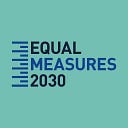Turning data into insights on progress towards global gender equality
The SDG Gender Index is a data-driven tool that allows gender advocates to explore countries’ strengths and weaknesses, choose future policy targets, and share insights with each other.
The new global Index recently released by Equal Measures 2030 shows that the world, including its most developed countries, still has room for improving the status of girls and women and achieving gender equality. The SDG Gender Index is based on 51 gender-sensitive indicators on 14 of 17 Sustainable Development Goals and aligned to SDG targets. It covers 129 countries and 95% of the world’s population of girls and women. What can the Index tell us?
A global index is commonly used to reach wide and non-technical audiences because of its ability to summarise different dimensions of a complex issue resulting in a single measure. Global indices are often used to rank country performance — and the media frequently cites the top and bottom ten countries in human development, global competitiveness, higher education, inequality and in many other areas. But there are many research questions that an index can inform beyond rankings by providing the big picture and comparing gender equality across different goals and countries.
Not unsurprisingly, developed countries tend to score better on overall index results — suggesting that gender equality contributes to and benefits from general improvements in well-being, growth and opportunity. But looking at individual goals can tell another story about country contexts and equality.
For example, on SDG 5, the goal dedicated to gender equality, developing countries come out much higher in terms of national rankings. South Africa, Rwanda and Namibia are ranked in the top 35 scoring countries in the world on SDG 5 while their overall index ranks are 71st, 91st and 75th , respectively.
The score for SDG 5 is based on five indicators that capture different dimensions of women’s empowerment, including two on women’s representation in politics and government. It is in this area where less developed countries are closer to achieving gender parity compared to their more developed counterparts. On the indicator of the proportion of women in senior government posts, Rwanda is tied for 1st in the world and South Africa is in the top 10. Existing evidence suggests that such an outcome leads to more gender-friendly and stronger social and economic development outcomes.
Progress on core gender issues like women’s political participation (SDG 5), and others like women’s health (SDG 3) and girls’ education (SDG 4) are dependent upon addressing gender in other goals which are often underrecognised. These are supporting environments that foster improvements in human and social capital, empowerment, norm change, etc. Monitoring goals such as water (SDG 6), clean energy (SDG 7) and climate (SDG 13) through a gender lens is also vital for achieving core gender issues. For example, girls’ roles in collecting fuel and water for the household affects their health, risk of exposure to gender-based violence and school attendance.
Seeing the big picture allows one to assess gender issues across the goals and map out a country’s specific strengths and weaknesses. No country in the index does well on gender equality across every one of the SDG targets or when benchmarked alongside the score for their region. Uruguay — the top-scoring country overall on the index in Latin America — scores “poor” on SDG 9 (Cities) and “very poor” on SDGs 13 (Climate) and 17 (Partnerships). Uruguay scores below the regional average for Latin America in SDG 2 (Nutrition) and SDG 4 (Education) and SDG 17 (Partnerships).
Exploring strengths and weaknesses across goals can also show where there are potential gains for both individuals and economies. For example, amongst the top 15 scoring countries for girls’ and women’s education, where women’s participation in secondary and continuing education is a norm, four countries (Kazakhstan, Japan, South Korea and Ukraine) score “poor” on the extent to which they have laws mandating women’s workplace equality — and three (Georgia, Kazakhstan, and Ukraine) score “poor” on women’s access to financial institutions. While these countries promote equal learning opportunities for girls and women, they need to address the barriers faced beyond schooling in order to turn this investment into improving women’s empowerment, and into growing economies.
The index provides baseline data from the beginning of the SDGs (around 2015), and will be updated in 2021 to track changes in gender equality over time. As a tool for system-level monitoring and accountability, this index can also provide new ways to explore the relationships between different goals and indicators and highlight where countries are making progress or not. The next step is to unpack these issues while taking national context and local policy frameworks into account. Moreover, it is important to know how governments and development partners are integrating gender issues in setting policy targets that will contribute towards achieving the gender equality across the SDGs.
Learn more about the SDG Gender Index.
